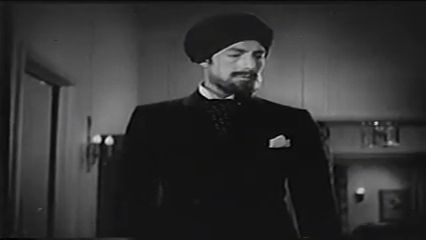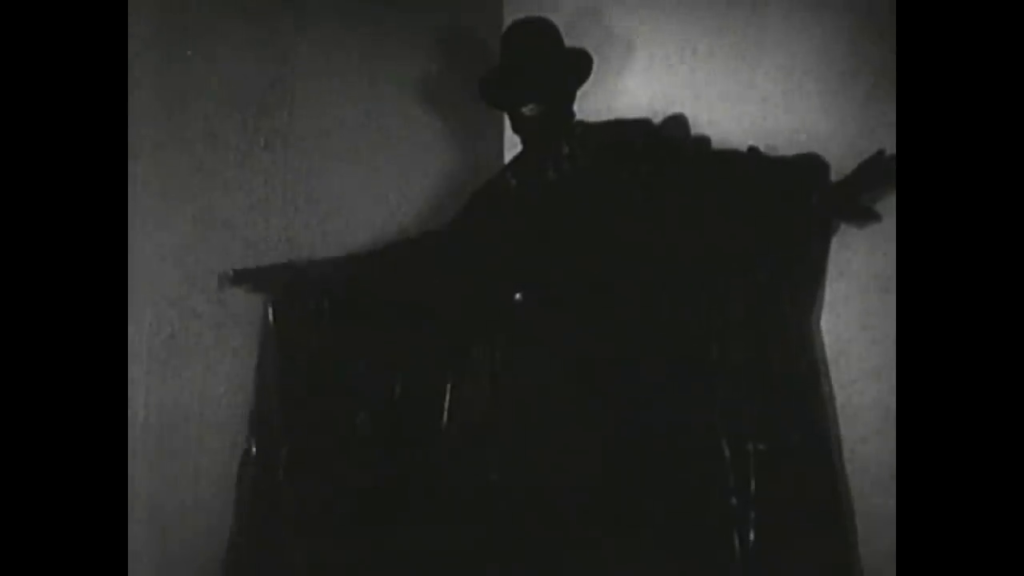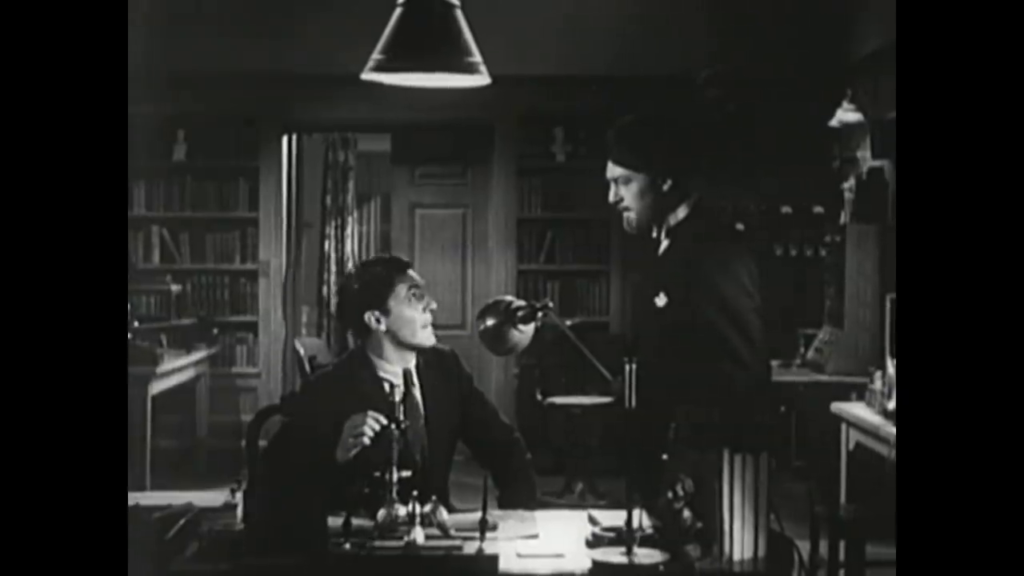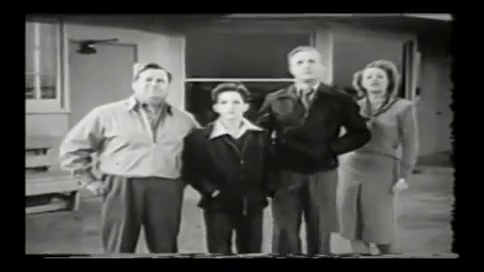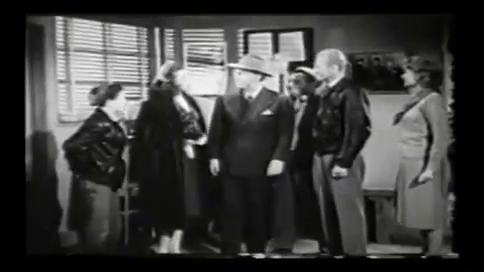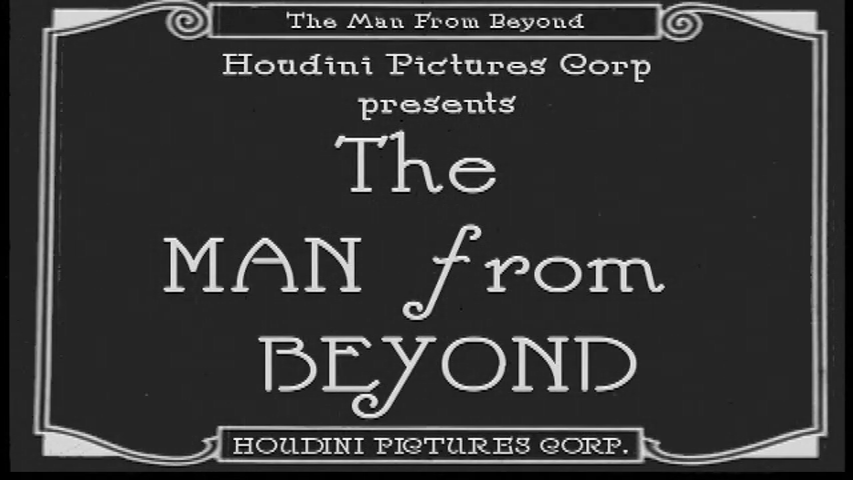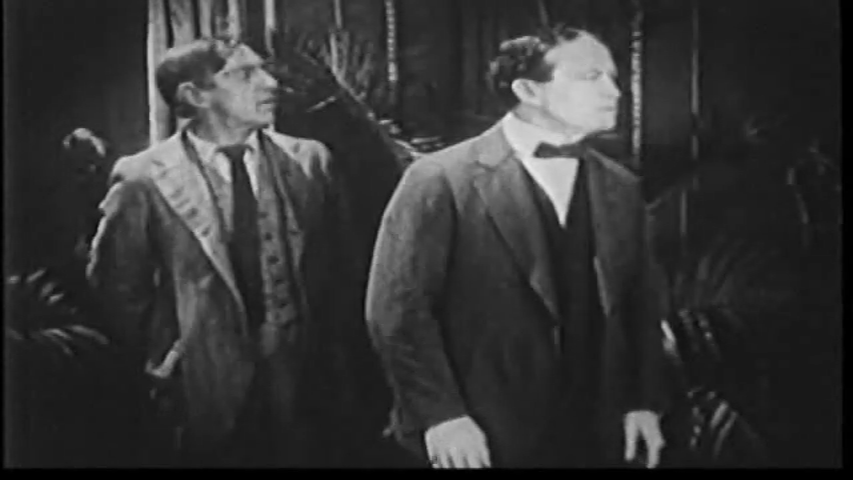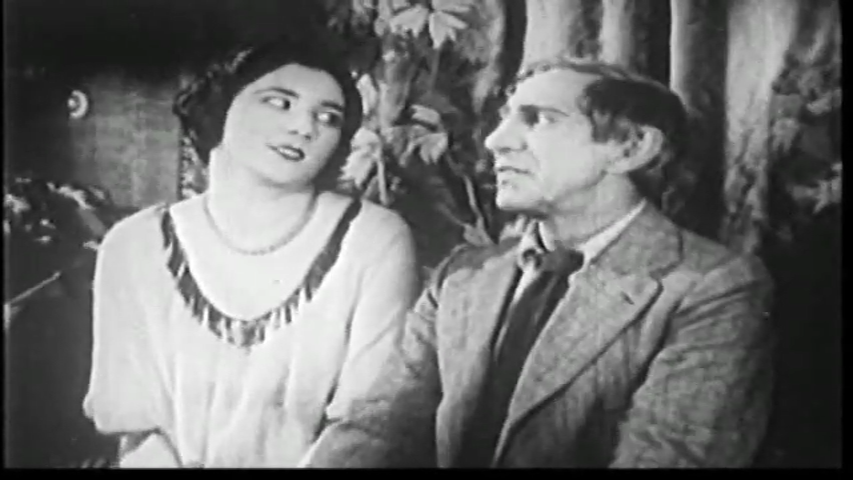-
#413 – Sammy’s Super T-Shirt (1978)
Sammy’s Super T-Shirt (1978)
Film review #413
Director: Jeffrey Summers
SYNOPSIS: Young Sammy Smith is training hard to enter a local race. After he enters, a pair of bullies throw his lucky shirt up into the window of a factory. Sammy and his friend Marv sneak in to get it back, unsuspecting that the factory is a top secret laboratory, where Sammy’s shirt has been subjected to an experiment that has made it indestructible, and gives Sammy extraordinary strength when he wears it. The owner of the laboratory and his scientist find that Sammy has the shirt, and give chase before he can reveal the shirt’s secret…
THOUGHTS/ANALYSIS: Sammy’s Super T-Shirt is a 1978 British children’s film. At the start, we see twelve year old Sammy Smith exercising in his room trying to get stronger so he can compete in the local race. He goes to sign up for the race with his friend (and self-proclaimed manager) Marv, where the two are accosted by two bullies, who steal Sammy’s lucky T-shirt and throw it through an open window. It just so happens that the building the shirt lands in is a top secret laboratory where experiments on making an indestructible material are being carried out, and it also happens that Sammy’s shirt is used for the experiment that is successful. The lab’s owner, Mr. Becket and the scientist, Mr. Trotter, want to keep it a secret and exploit their discovery, but after Sammy and Marv sneak in to get the T-shirt back, they must find a way to get it back before the young boy ruins their discovery. The plot of the film is a very simple one, which mainly involves Sammy and Marv being chased by the two adults, and the various tricks they use. Not too much to say about it, but it’s easy enough to follow, and provides a few humourous moments through it’s slapstick comedy. Being only just under an hour long, everything is neatly wrapped up and there’s no real lull in activity, so it will keep it’s younger target audience entertained.
There’s something very nostalgic about this film: all of the locations are straight from their time. There’s no fancy sets or designs, just real locations that are a snapshot of the time. I imagine this would have been great for a young kid of the time, as these locations would have been just like the working-class streets they were growing up and played in, meaning their imaginations could run wild with the idea of running through their neighbourhoods with super powers. The child actors are also fairly good, and it would be easy to identify with young Sammy. His friend Marv being black and having a prominent role is something less than ordinary, as you certainly didn’t see many young black actors in these types of films, much less as just as much of an ordinary kid as the white lead. They do remark once how unusual their being seen together is (”one black and one white”), but other than that it just feels like two kids being kids without stereotypes, which is pretty cool.
While kids of the time of it’s release would have probably enjoyed the down-to-earth nature of the film, it is definitely dated today, and kids that may watch it now certainly wouldn’t get the same mileage out of it’s setting. Setups such as Sammy taking the clothing to the launderette to be washed just wouldn’t resonate, alongside the housing and manners of speech just wouldn’t reflect what we would recognise as “ordinary” today. Nevertheless, Sammy’s Super T-Shirt is a bit of short, harmless fun without too much merit. It feels like a time capsule of decades gone by, and if you grew up around this time, you would certainly get a wave of nostalgia through the locations and language used by the ordinary, working-class cast of the late seventies. Kids today won’t get anything out of it, but an interesting snapshot of times gone by.
-
#412 – The Spider Returns (1941)
The Spider Returns (1941)
Film review #412
Director: James W. Horne
SYNOPSIS: A masked criminal, known only as The Gargoyle, and backed by malicious foreign powers, aims to sabotage national defence production by targeting the owners of key industries. Criminologist Richard Wentworth must once again don the secret disguise of “The Spider,” a masked vigilante, in order to move outside of the rules and regulations of law enforcement, and along with his friends stop The Gargoyle before he can do irreparable damage to the country…
THOUGHTS/ANALYSIS: The Spider Returns is a 1941 movie serial and the sequel to the 1938 serial The Spider’s Web, based on the magazine comics of “The Spider.” The serial follows a similar setup to the first one, with criminologist Richard Wentworth secretly disguises himself as the masked vigilante The Spider in order to stop another masked individual known only as The Gargoyle, whose criminal gang is working to sabotage industries related to national defence. Sabotage really is the key word for the plot of this serial: it was released in 1941 in the context of the second world war and a heavy focus on the U.S. gearing up for getting fully involved. The concept of sabotage runs through a lot of wartime serials, with suspicion being placed on “the enemy within,” who would attack not from outside, but from the inside through the acts of sabotage. There’s a fair amount of wartime messaging throughout the serial, explaining how “our great country” is under threat from “foreign powers,” who will target key industries. No specific country names are mentioned, but you can figure it out. With this theme, the serial has a bit more of a darker tone to the story, but never anything overly scary, as these serials are generally aimed at younger audiences and bringing in families. To seemingly offset the darker tone, there’s some more silly moments, usually between The Gargoyle and his inventor assistant, as The Gargoyle berates him for his inventions going wrong. They do however make The Gargoyle feel a bit less threatening, but again that may have been the purpose to make the serial a bit more family-friendly, and the villain less scary, while still getting the wartime message through. Overall though, it does present a bit of a mismatch that makes the comedy seem on the whole out of place.
All of the protagonists from the first serial make a return here, although only two of the original actors reprise their roles: Warren Hull as Richard Wentworth AKA The Spider, and Kenne Duncan as Wentworth’s chauffeur Ram Singh. Dave O’Brien, who was Hull’s stunt double in the first serial, now takes over as Jackson, Wentworth’s assistant. The characters more or less have the same roles as they did before, but perhaps have less to do than they did in the first serial, which balanced out the use of the characters a lot more than most serials. Hull performs the triple role of Wentworth, The Spider, and Wentworth’s disguise Blinky McQuaid, a petty criminal who Wentworth disguises himself as in order to go undercover and get information from The Gargoyle’s henchman, and his multi-faceted role is very much the centrepiece of the story. The different roles give enough variety to the situations, and causes Wentworth to consider his actions in terms of how each character is perceived, such as police commissioner Kirk’s attempts to catch The Spider, and who always has suspicions that Wentworth is the masked vigilante. As mentioned, the villains are a bit less threatening in their hapless endeavours, as The Gargoyle gets into some comedic banter with his inventor assistant, and using his X-Ray eye machine, spies on his underlings to see they are having a party instead of doing his evil work.
While The Spider’s Web was a wildly popular serial that probably (in part) sparked the trend of masked superhero serials, The Spider Returns isn’t quite as good as its predecessor, but is still a decent example of the format, with enough variety through Hull’s triple performance, the sci-fi inventions used by the villain, and the focus on sabotage and its wartime message has some impact. The trend of masked superheroes faded away after the war was over, instead making the leads more military-like and ordinary to reflect the victorious soldiers of the war. However I think the escapades of The Spider shouldn’t be forgotten, as they were very influential in the production of the serial format in its time.
-
#411 – The Spider’s Web (1938)
The Spider’s Web (1938)
Film review #411
Directors: James W. Horne, Ray Taylor
SYNOPSIS: A wave of crime across the city targeting key infrastructure and transportation networks is being conducted by a criminal mastermind known only as “The Octopus” with aims to take over all the key utilities and companies. Criminologist Richard Wentworth must don his secret identity of “The Spider” in order to thwart The Octopus’ plans outside of the police’s rules and regulations…
THOUGHTS/ANALYSIS: The Spider’s Web is a 1938 serial based on the comic book character “The Spider” (not to be confused with spider-man). The serial starts out strongly as most of the format does in order to entice viewers back week after week. In the opening chapter contains plane crashes, car chases, fist fights and a heap of explosions, so there’s definitely plenty of bang for your buck. The explosions and destruction of key transport and city infrastructure is being carried out by a criminal mastermind known only as “The Octopus,” who seeks to put his own men in charge of all these utilities by killing off the current managers of them. Renowned criminologist Richard Wentworth is travelling home on his plane with his sweetheart Nita van Sloan when their plane is attacked and they have to parachute out. Wentworth learns of this new crime wave and decides to once again become the masked vigilante “The Spider,” who chases crime where the rules and regulations of the police cannot go, even though he promised Nita that he had retired from the costumed life. The story is a standard serial affair of the hero foiling the villain’s various schemes across the fifteen chapters, and while it does not do much unique in terms of story, it still executes the usual plot points in a fun and interesting way, and with a good level of competency.
The characters are a typical cast of serial characters. Wentworth is the usual lead character, Nita is the sole female character, and Jackson is the sidekick who gets in on some of the action. Ram Singh is Wentworth’s assistant who is clearly meant to be Indian, but is portrayed by a white American and refers to him as “Master” occasionally like he is a servant. and that is obviously a problematic stereotype of non-white people being subservient to them. Wentworth himself is very much like Batman’s alter-ego Bruce Wayne: he is rich, clever, works alongside the police, but when he dons his mask to fight crime, he is wanted by them. He can also disguise himself as a known criminal “Blinky” McQuaid, which he uses to get close to the criminals and get the information on their plans. These different facets to the main character add some good variety to the serial, and make the lead a bit more stand-out from the sheer volume of serial leads which all look and act the same. The Octopus as a villain is shown to be cunning and ruthless, as he executes those who fail him. His being dressed in a white hood and cloak mirrors the Spider’s outfit, which is almost the same, but in black. The identity of The Octopus is, unusually for such a serial, never really explored or even revealed in the finale, and we are only told he is one of the most powerful men in the city.
At the time of it’s release, The Spider’s Web was a huge success, and it is easy to see why: it doesn’t deviate from the serial format, but does all its tropes pretty well. The character of The Spider as a masked vigilante probably helped kick-start the popularity of masked superheroes, and serial adaptations in the 1940s. The Green Hornet, one such serial, is practically identical in both story and characters, with the masked vigilante stopping crime and eluding the police, while being aided by a foreign sidekick.
-
#410 – Hop Harrigan (1946)
Hop Harrigan (1946)
Film review #410
Director: Derwin Abrahams
SYNOPSIS: Hop Harrigan, a pilot along with his buddy “Tank” Tinker, are hired to escort a scientist to his secret laboratory hidden in the mountains, where he is working on a powerful new source of energy. Meanwhile, a man known only as the “Chief Pilot” is after the invention for himself to use as a deadly weapon. Hop and his friends are caught up in the schemes of all of these players, and they must stop them before disaster befalls the world…
THOUGHTS/ANALYSIS: Hop Harrigan is a 1947 movie serial based on the Hop Harrigan character from the All-American Comics series, as well as the radio plays. Harrigan became quite popular during the course of the second World War, probably due to his heroic piloting antics which would have resonated with the population. However, his population waned after the war ended along with many of the similar characters, with people rather turning their attention to costumed superheroes and the villains being spies rather than soldiers. The serial starts off with Hop performing a mid-air rescue, then returning back to the airfield where he works. he is offered a job by a man named Arnold to fly a scientist named Dr. Tobor to his secret laboratory. Tobor has been working on an invention that runs on a powerful new energy, and has to keep Hop and Tank blindfolded while in the air so they do not see where the lab is. Meanwhile, an unknown person calling himself “The Chief Pilot” is intent on getting a hold of Tobor’s invention for himself, and sends his goons to kidnap him. The plot of the serial as always follows the standard format of each chapter having a different scheme or plot to foil, with it ending on a cliffhanger for the next chapter. I imagine the serial format isn’t the best one to adapt Hop Harrigan in, as he is probably more used to dealing with soldiers and villains rather than engaging in thwarting espionage, but again that’s like a lot of the serials, which used the name of a comic book character and didn’t really adapt anything else about them.
On the heroes side, you have the standard All-American heroics of Hop Harrigan, his sidekick and comic relief “Tank”, who offers some decent interactions with his goofiness playing off against other characters. Gail is the token female character who runs the airfield (though she doesn’t really do much), and her younger brother Jackie, whose book-smarts often clash with Tank’s brute-force approach. Jackie provides a good example of a younger characters which the kids in the audience can relate too, and he has a decent amount to do, which helps in that regard. Other than that though, the heroes are pretty unremarkable. There are quite a few villains in this serial, ranging from the mysterious Chief Pilot, whose identity isn’t revealed until the end (a typical serial trope), and an array of henchman, some of whom are working with the Chief Pilot, and some who are working for Hop’s employer Arnold and secretly working against him. There’s also Dr. Tobor (’Robot’ spelled backwards in case you hadn’t noticed; I’m pretty sure I’ve watched another serial or film which uses the same name, but I can’t remember which), who essentially plays the eccentric scientist who becomes more and more erratic as the serial progresses. He is sought by both heroes and villains, and constantly tricks them and plays them for fools, which shakes up the dynamic. Tobor as the wildcard element helps to give a bit of an original edge to the story, and that is welcome.
If you’re going to watch a Hop Harrigan serial, then no doubt you’ll be expecting plenty of scenes in the sky and plane fights. The serial more or less delivers what it promises with plenty of scenes taking place in the air, and shot reasonably well for the time, but most of the action does take place on the ground, and the plane scenes are just to travel from place to place, or to follow a car from the air.
-
#409 – The Man from Beyond (1922)
The Man from Beyond (1922)
Film review #409
Director: Burton L. King
SYNOPSIS: An expedition finds a shipwreck frozen in the Arctic. On board, they find a man encased in ice. They begin to free him, and learn from the journals on the ship that the man was frozen over one hundred years ago in 1820. They decide to not tell him about this until they are ready to announce his discovery to the world. When the man is taken to the home of a scientist, he sees a woman being married that he believes is the same one he loved over one hundred years ago. Little does he know, he is interrupting an evil scheme undertaken by the man she is marrying…
THOUGHTS/ANALYSIS: The Man from Beyond is a 1922 film starring the famous escapologist Harry Houdini. At the start of the film, we see two men on an expedition in some frozen wastelands, when they stumble across a ship embedded in the ice. Dr. Sinclair, the head of the expedition, learns that the ship had been wrecked in 1820, over one hundred years ago through reading some of the journals on board. They find a man encased in ice who they are able to thaw out. The man wakes up and still believes he is in the year 1820, and Dr. Sinclair decides not to tell him how long he has been frozen until he is returned to civilisation where his discovery can be announced to the world. He is brought to the home of Dr. Sinclair by car…which is a bit odd considering that there were no cars in 1820, and so the man should probably have been suspicious about what was going on? Anyway, the man, Howard Hilary, sees that a wedding is going on between a man named Dr. Trent and a woman named Felice…who resembles the woman he loved before he was shipwrecked, also called Felice. Hilary interrupts the wedding believing the Felice he knew has abandoned him, but this Felice has no idea who he is.
The man Felice is to marry, Dr. Trent, is planning to marry her so he can get his hands on her Father’s property. Her Father, Dr. Strange (no, not the Marvel superhero) has been missing for nearly a year after he went along for the voyage, but apparently got a not saying his daughter was sick, and never returned home. The plot mainly revolves around Hilary attempting to stop Dr. Trent from marrying Felice and uncovering his evil scheme, while attempting to find her Father. I feel like the film could have done more with the premise of a man waking up after one hundred years. Instead, it focuses on a love story and an evil scheme that doesn’t really live up to what it could have been. The story is well put together, and the pacing is decent enough along with a varied cast of characters, but not enough attention is given to the novel premise of the film. Being a Houdini film, there are a few scenes of him performing some escape acts, and the finale being set on a raging river delivers some entertaining action that adds variety.
The film opens up showing a quote from the bible, which I assume is due to the whole theme of bringing someone back from the dead and reincarnation would have been controversial and heretic for a film at the same, so the film frames the events in this Christian way to avoid these accusations (which would be my guess anyway). Another interesting reason for this may be because the film was also a means for Houdini to restore his friendship with Sir Arthur Conan Doyle, the writer of the Sherlock Holmes stories. Doyle, while not particularly religious, was an enthusiast for Spiritualism, and wrote two books on the legitimacy of seances, communicating with the dead, ectoplasm and such forth. Houdini was a vocal sceptic of spiritualism, and the pair fell out during a seance where Houdini’s Mother was supposedly speaking from beyond the grave through a medium, and Houdini was enraged when the medium spoke in English, even though Houdini’s Mother only ever spoke and understood German. It seems to have had the desired effect, as Doyle praised the film and its message. Whether Houdini really changed his mind or not on spiritualism I’m not sure, but it’s an interesting story.
Overall, The Man from Beyond is a decent story for the time, with some good special effects and the expected Houdini escape feats. It’s messaging around reincarnation is a bit muddled however, and the unique premise of a man who has been frozen for over a hundred years having to adjust to ‘contemporary life’ isn’t really given any thought or focus. If you want a film which does that, the 1930 film Just Imagine! is probably one of the earliest examples.














